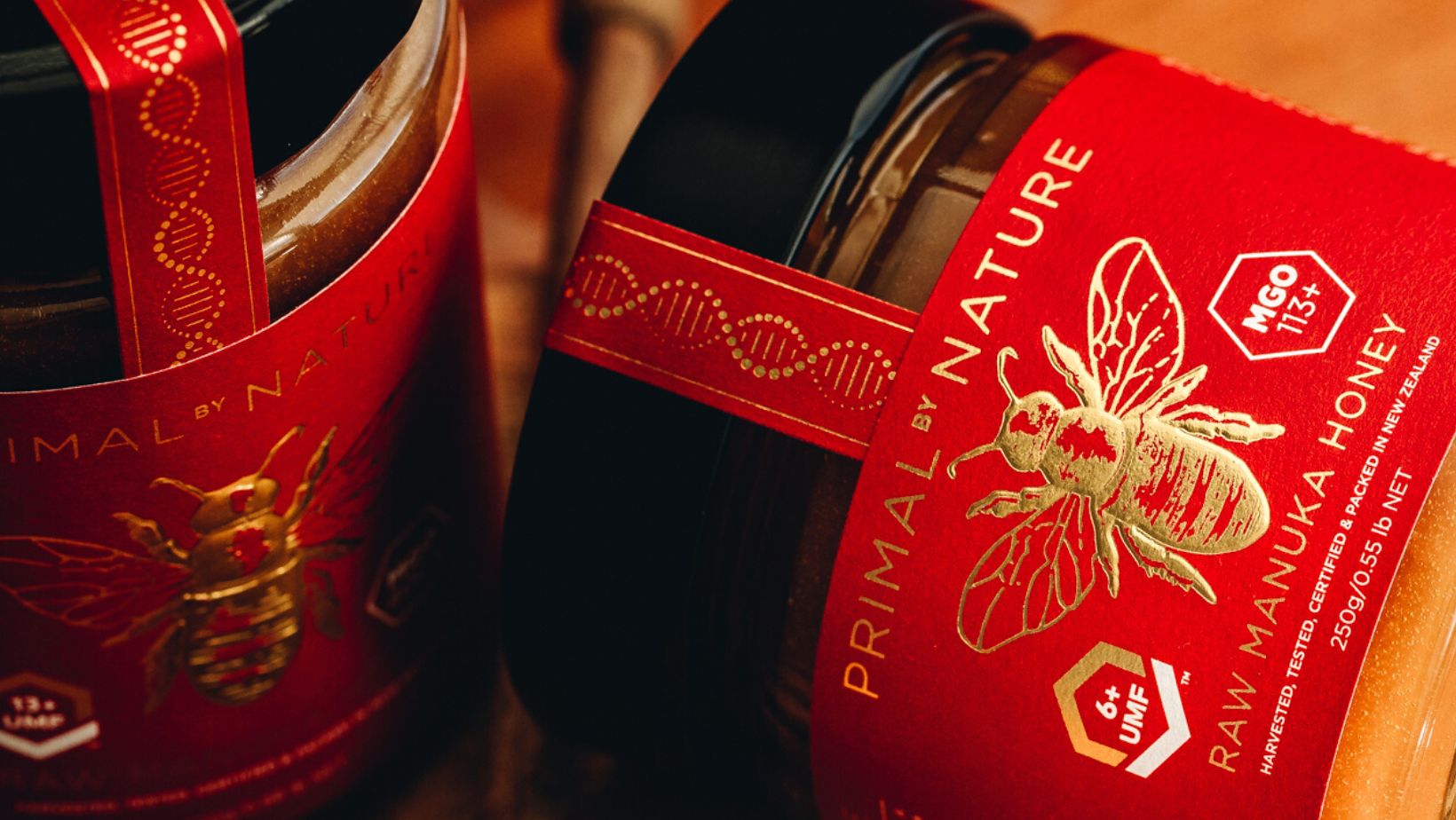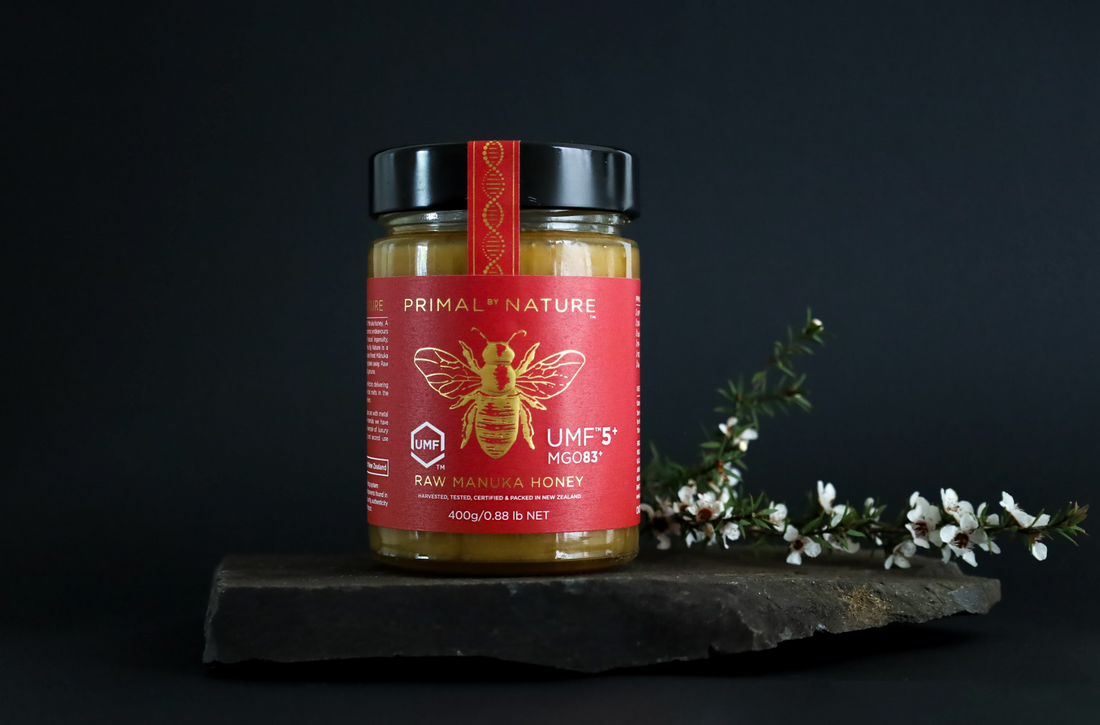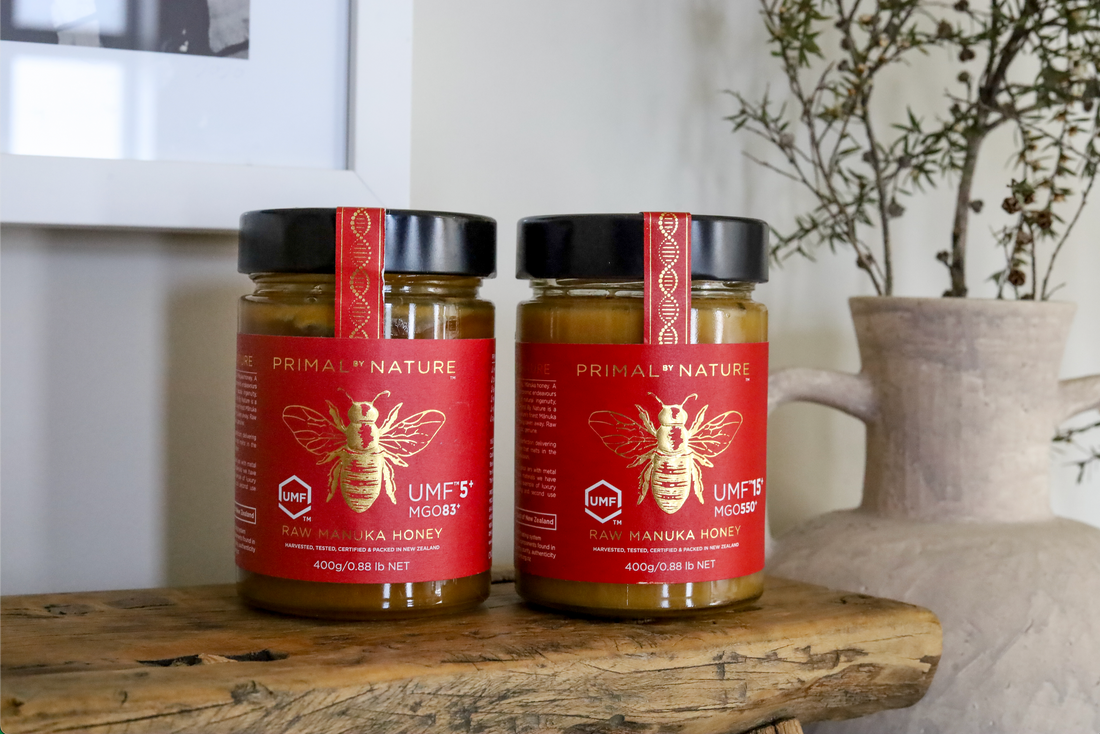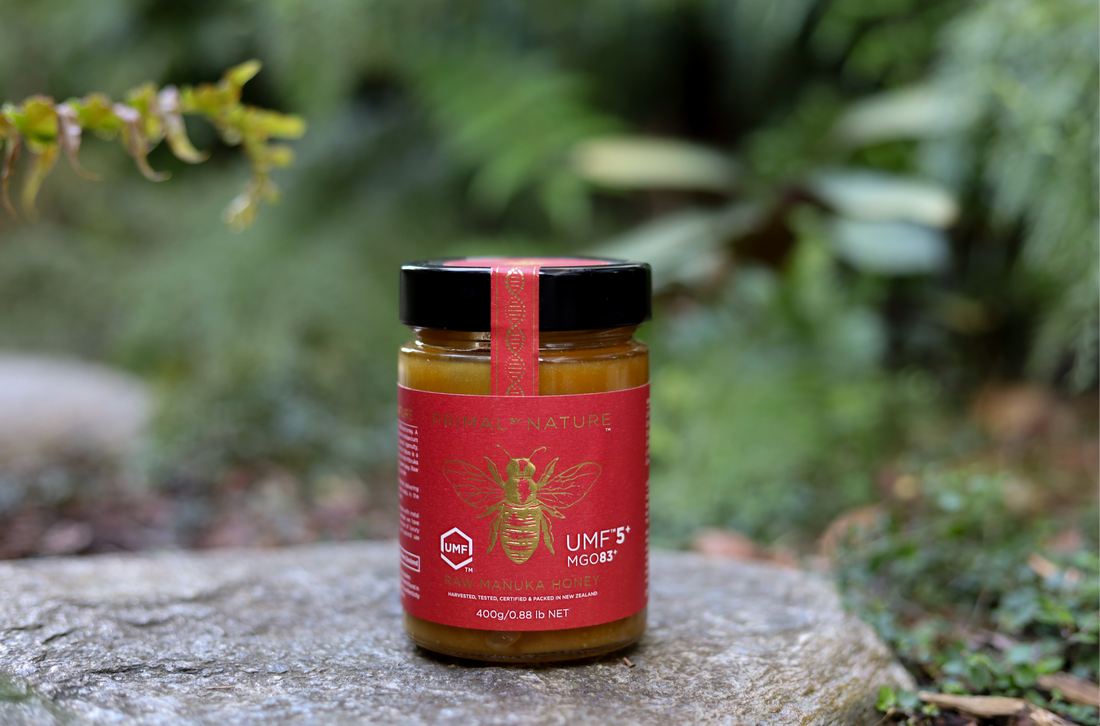Honey has been used as a natural sweetener and medicinal remedy for thousands of years. However, not all honey is created equal. One type of honey that has gained popularity recently is Mānuka honey, specifically pure and raw Mānuka Honey.
Mānuka honey is derived from the nectar of the Mānuka bush, which is native to New Zealand. In this blog, we will compare and contrast genuine Mānuka honey with conventional honey.
There Is Far More MGO in Mānuka Honey
First, the composition of monofloral Mānuka honey is considered very unique. This type of honey contains a remarkable compound called methylglyoxal (MGO), which is found in minuscule concentrations within conventional honey. MGO is responsible for Mānuka honey's unique properties that some have suggested may have certain antibacterial activity, making it a popular natural remedy for sore throat relief and even a facial soother.
Conventional honey, on the other hand, is produced from various nectar sources, including clover, alfalfa, and wildflowers. There is a mixture of glucose, fructose, and sucrose, with minimal amounts of vitamins and minerals. While conventional honey still provides some health benefits, it does not possess the same concentration of unique properties like MGO - exponentially found in pure Mānuka honey.
A study conducted in 2014 confirmed hypotheses that genuine Mānuka honey contained MGO concentrations as high as 20-fold more than conventional honey.
More Effective Grading and Certifications With Mānuka Honey
Another significant difference between pure Mānuka honey and conventional honey is their grading systems. Pure Mānuka honey is graded based on its MGO content, with a higher MGO indicating a higher level of antibacterial activity.
The grading system ranges from MGO 83mg/kg to MGO 1800+mg/kg, with higher grades being more potent. In contrast, conventional honey is typically graded based on its colour, with lighter-coloured honey being more desirable. However, fans of monofloral Mānuka honey will be on the lookout for Mānuka honey that is UMF-certified.
Why Is UMF Important For Pure Mānuka Honey Certification?
The UMF rating system was developed by the UMF Honey Association, a non-profit organisation based in New Zealand. This system grades the Mānuka honey based on its antibacterial activity, which is measured by the amount of methylglyoxal (MGO) present in the honey. MGO is a unique compound that is found in high concentrations in Mānuka honey, and it is responsible for its unique properties and esteemed reputation.
The UMF rating system ranges from 5+ to 32+, with higher numbers indicating a higher level of potency. The rating system takes into account the MGO content, as well as other factors such as the presence of other unique compounds and the honey's overall purity.
To determine the UMF rating of Mānuka honey, samples are sent to an independent laboratory for testing. The laboratory measures the MGO content and other factors and assigns a UMF rating based on the results. Only honey that meets the minimum UMF rating of 5+ can be considered authentic Mānuka honey.
For more information on the rigorous UMF validation process, please read - ‘UMF™ Mānuka Honey And How It Should Be Used’
The Value of the Mānuka Honey Is Far Greater
One of the main reasons for the high value of Mānuka honey is its limited availability. The Mānuka bush is only found in certain areas of New Zealand, and the honey is produced in limited quantities. Additionally, the extraction process for Mānuka honey is labour-intensive and requires specialised equipment, which is essential to maintain the raw nature of Primal by Nature’s products.
Furthermore, Pure Mānuka honey is regulated by the Unique Mānuka Factor (UMF™) Honey Association, which ensures that the honey is authentic and meets specific quality standards. Conventional honey, on the other hand, is not subject to such regulations.
Primal by Nature - Sustainably Providing 100% Pure New Zealand Mānuka Honey
Primal by Nature can deliver Mānuka honey from the rawest and most primal regions in some of the most remote New Zealand locations. We are your one-stop shop for a sustainable and natural solution. Our Mānuka honey comes in a range of UMF™ strengths.
All Primal by Nature Mānuka honey arrives at your door in recyclable glass jars regardless of the level of MGO or UMF™. We believe that our pure New Zealand Mānuka honey must be the best and should be available to consumers in the same eco-friendly packaging.
Primal by Nature eliminates the confusion surrounding Mānuka honey UMF™ grading systems and standards. As a result, you will be made aware of the different grades and be confident in buying a product that reflects an environmentally conscious brand.
Taking Mānuka honey to the next level, every Primal by Nature glass jar contains a potent primal burst of nature. To taste Mānuka honey of this stature is to embrace nature itself. So take a look at our extensive selection of Mānuka honey products and become one with nature.





